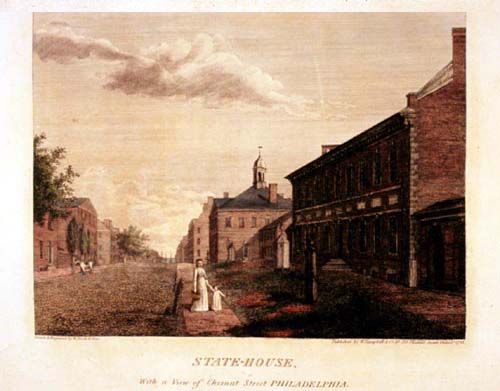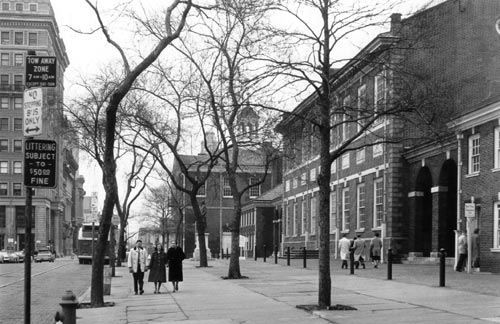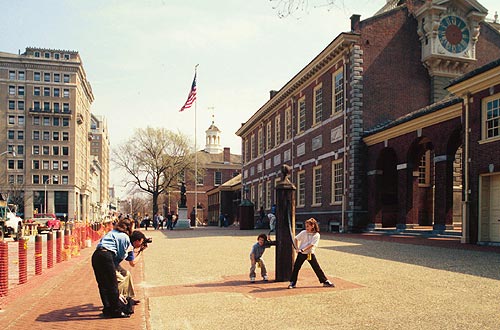The State House (Independence Hall), was built 1732-48 by the Province of Pennsylvania from drawings by Andrew Hamilton, Speaker of the Assembly, who superintended the construction. The project's master carpenter was Edmund Wooley. Here the Provincial Assembly met and the Supreme Court held its sessions. It is where the Declaration of Independence was adopted by the Continental Congress, British troops were quartered during the occupation of Philadelphia, and the Constitutional Convention assembled in 1787. The building with the cupola (BG-C) was built as Philadelphia's city hall, but was used as the seat of the United States Supreme Court when Philadelphia was the temporary capital of the nation (1790-1800). In 1800, after the federal capital was moved to Washington, the use of the State House reverted to the Commonwealth of Pennsylvania. Simultaneously the state government moved to Lancaster and the building became empty. In 1802, Charles Willson Peale received permission to use the upper floor and the Assembly room on the first floor for his museum (he used the second floor . until 1828). In 1818, the City of Philadelphia purchased Independence square and its buildings from the commonwealth. Recognition of Independence Hall as a national shrine developed slowly. Lafayette's week long visit in 1824 awakened interest. The Assembly room was completely redone and used for receptions. Later it became a levee room (formal reception chamber) for visiting presidents and other dignitaries, a place for displaying the Liberty Bell and a statue of Washington carved by Benjamin Rush, also for exhibiting a number of portraits of the nation's most prominent leaders painted by Charles Willson Peale (purchased by the city in 1854). (They now form the nucleus of 190 Peale portraits that are on exhibition at the Park's Second Bank of the United States). In 1865, President Lincoln's body lay in state in the Assembly. room. There were significant efforts to create a national shrine at the time of the Centennial celebration when the entire first floor was renovated and a museum of objects associated with the principal events in American history was established. Other restorations done in 1896-98 and in the early part of the 20th century concentrated on the remainder of the Hall, the arcades, wing buildings and garden. In 1951, the custody and operation of Independence Hall group of buildings and the square were transferred from the city to the National Park Service which undertook the most detailed interpretations and faithful restorations.
Photographs
Note the reconstructed pump, watchbox (guardhouse), and tall case clock in the 2000 photograph (FG-C, MG-C and MG-R). Also note the installation of a row of bollards (FG-L, see Plate 22)
Back Next




